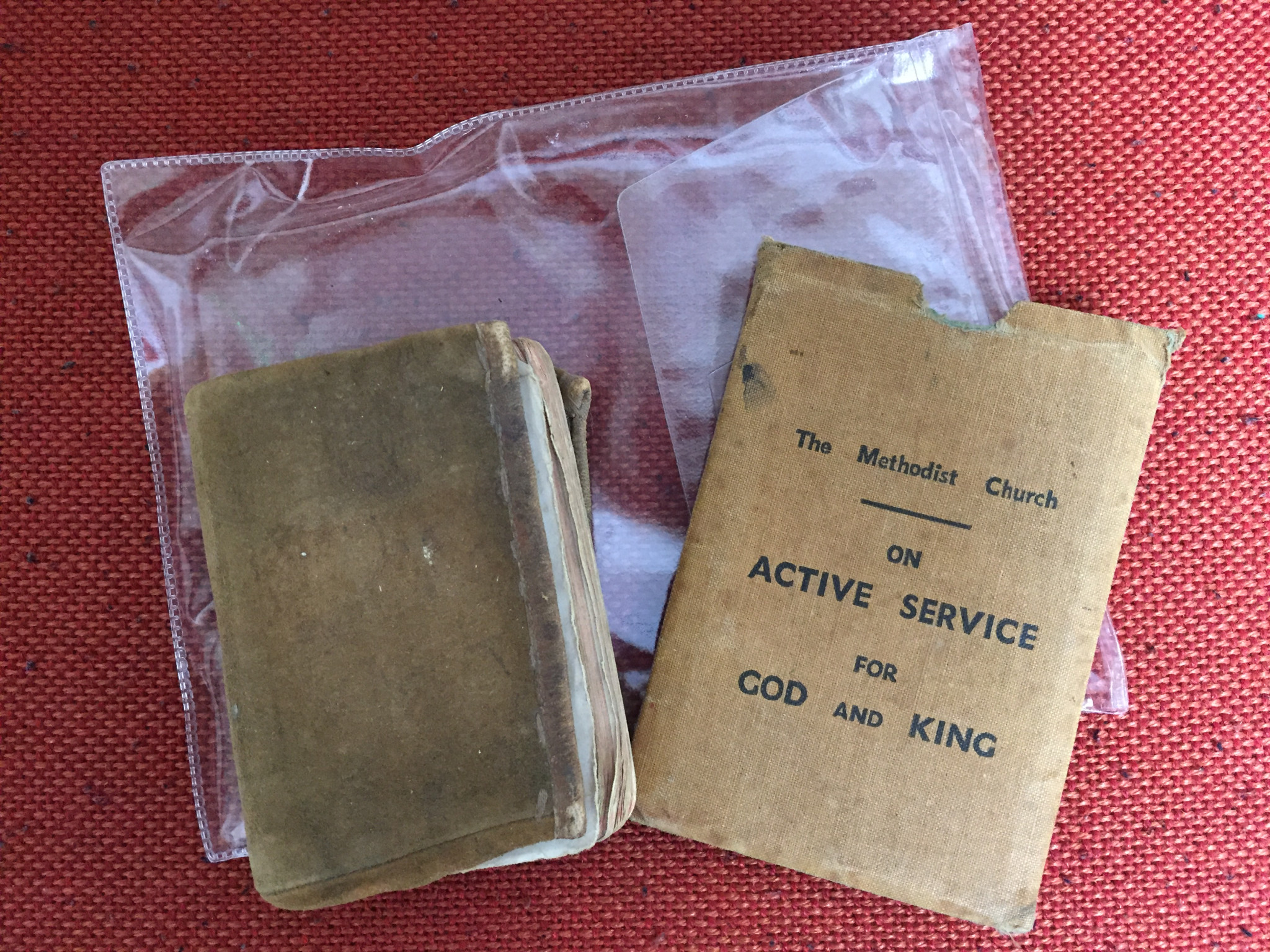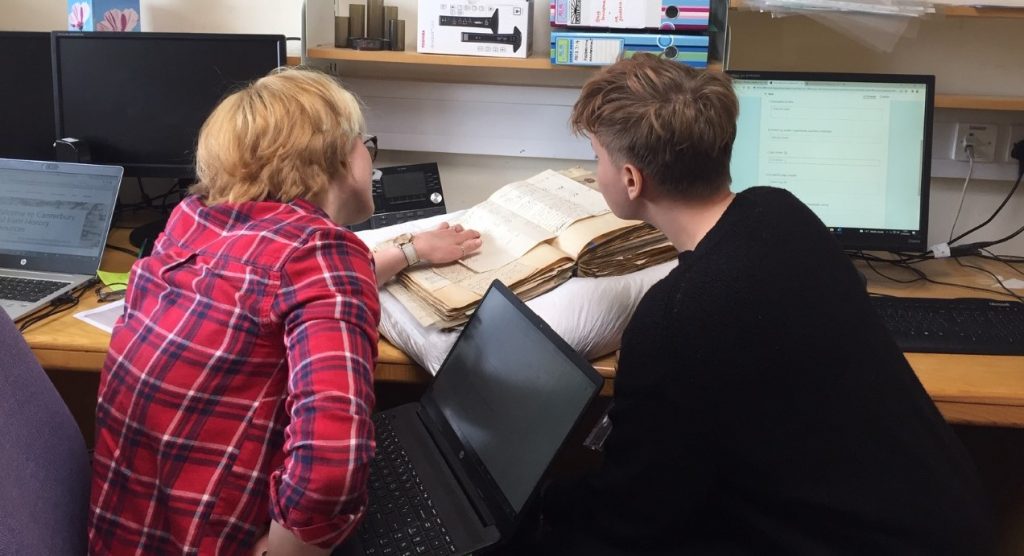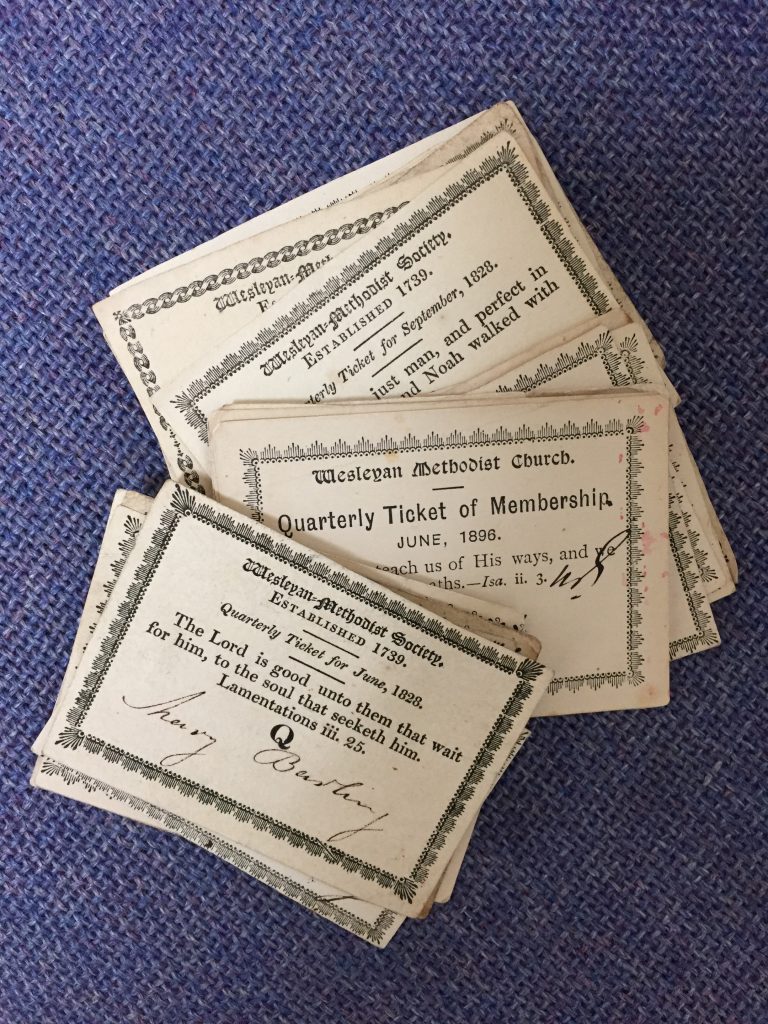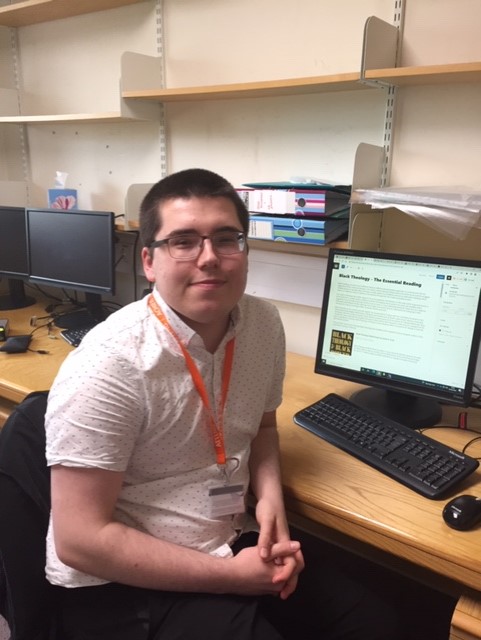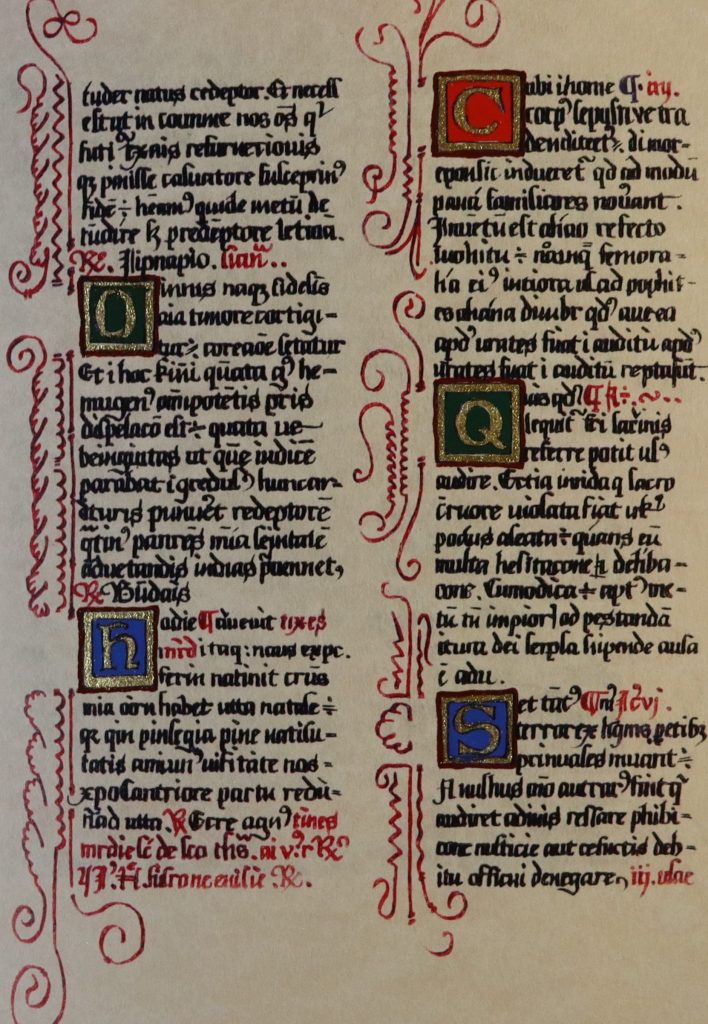This year the library offered two placement opportunities to Applied Humanities: Employability in Practice students – one was digitizing and researching a nineteenth-century scrapbook, and the other was processing and promoting the Black theology material. Read this blog post to find out more.
Dover Methodist Scrapbook
Amy Rose, Lily-Belle Matten and Ester Swanström photographed and created an inventory of the Dover Methodist Scrapbook, which was kindly loaned to the library for the placement. The Scrapbook which dates from the early days of Methodism includes posters, letters and newspaper items and is a rich resource of Methodist history in the Dover area.
As the Scrapbook is fragile, it was decided to photograph every item to reduce future wear and tear on the scrapbook. An inventory including additional research about the items was created and will be made available shortly on a dedicated website, along with blog posts written by the students. The students used genealogy databases as well as newspapers to research the items, including a previously undated poster which was dated using newspapers and a perpetual calendar.
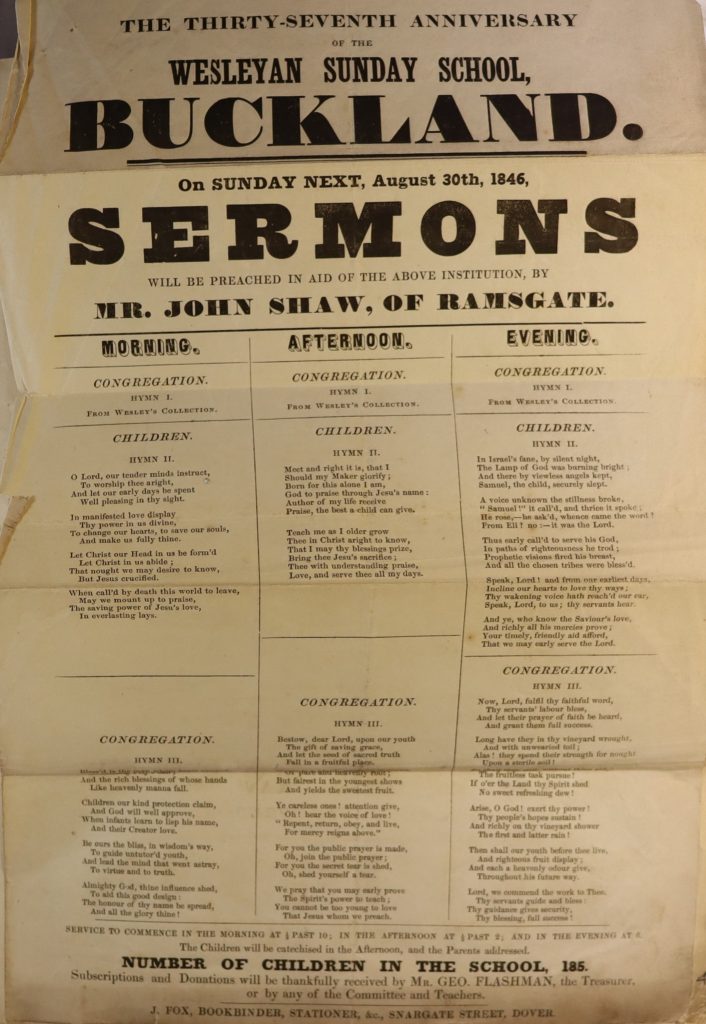
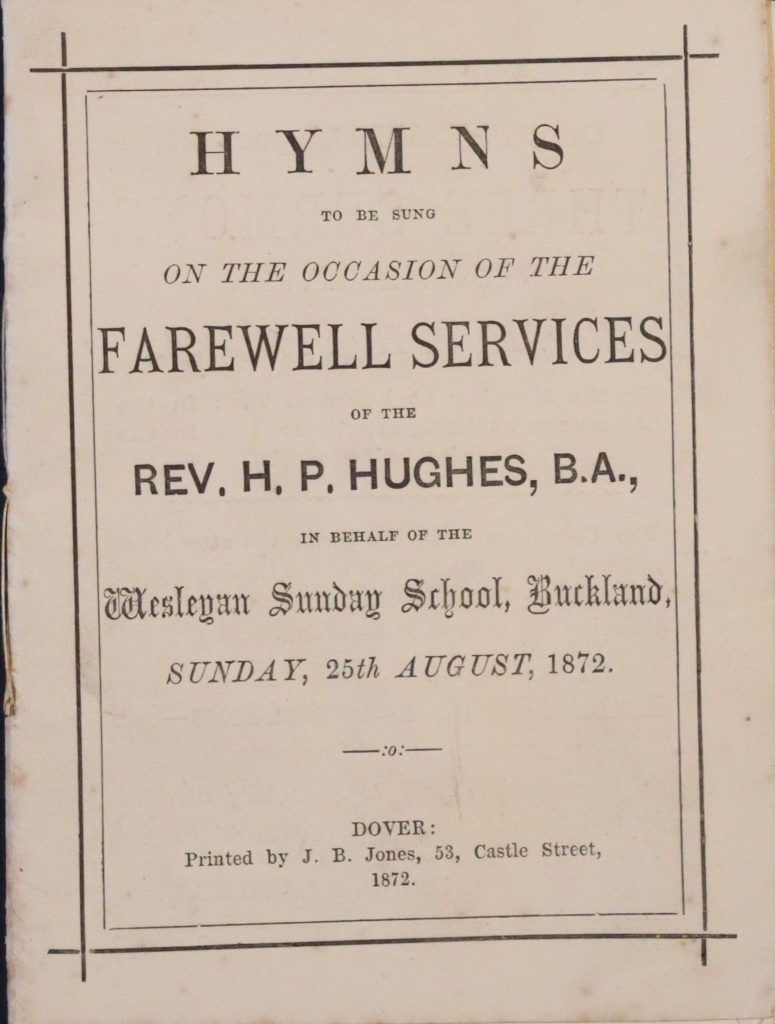
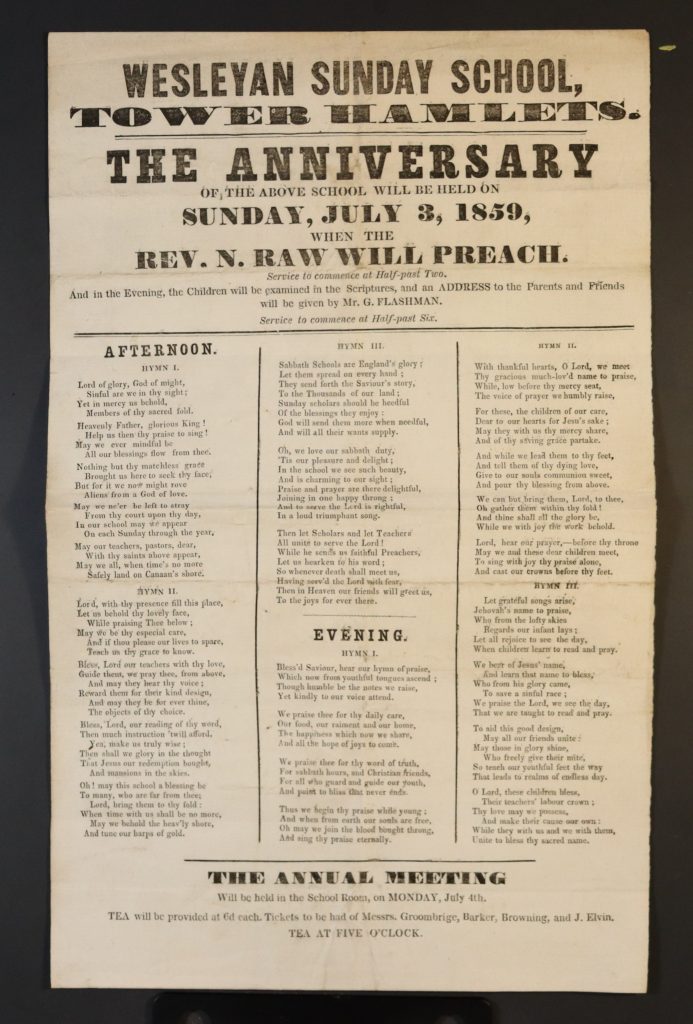
Amy explains more about the project
I learned how to take photographs and how to edit and organise them in an efficient manner and how to create an inventory that has all the essential information yet is easy to read. I quickly realised that with these kinds of projects it is easy to get confused, so I ensured that I utilized folders and file names to avoid this issue.
I found the photographing process to be incredibly interesting. Taking photos of each individual item made me realise the scale of the project but also how much day-to-day material there is – ephemeral material which often gets thrown away. I also really enjoyed the inventory process, as it tied into the photography and enabled me to think about how information is organized and structured.
I was surprised to find that with a few online databases I could find familial connections that lasted almost one hundred years via the names on membership tickets. It really gave a human edge to the material we were working with.
I would highly recommend this type of placement to students who are interested in digital humanities and archive work. It is also great if you would like to work on an ongoing project, and where your contributions have an impact on its development.
This placement has really made me consider a career in archives or some other forms of digital humanities. I feel like digitising material is vital to the development of academia and I want to be a part of that.
Black Theology, a herbal and all things Dickensian
Michael Paddon worked as a library collection development assistant processing new stock relating to black theology. His placement had that wonderful catch-all that job descriptions often have “and other related library tasks” which meant that he got involved in more than he bargained for, including photographing a facsimile of a herbal for the Medieval Animals project and visiting the Dickens Museum. The placement lasted 40 hours but was a whirlwind of new experiences, all of which Michael embraced with enthusiasm.
Here is Michael’s story
I did not realise there is such a wide range of skills and jobs within the field of librarianship itself. These ranged from creating promotional material to photographing replicas of ancient texts to creating lists of recommended reading for students.
The most interesting part of my placement was a visit to the Charles Dickens House Museum in Broadstairs, Kent. It was interesting to explore the museum and see the process up close of deciding what historical documents and books were suitable for the library to digitise and use as resources for future students. This visit allowed me to see a key part of the role of being a librarian in an educational institution. I also got to star in a promotional video for the School of Humanities.
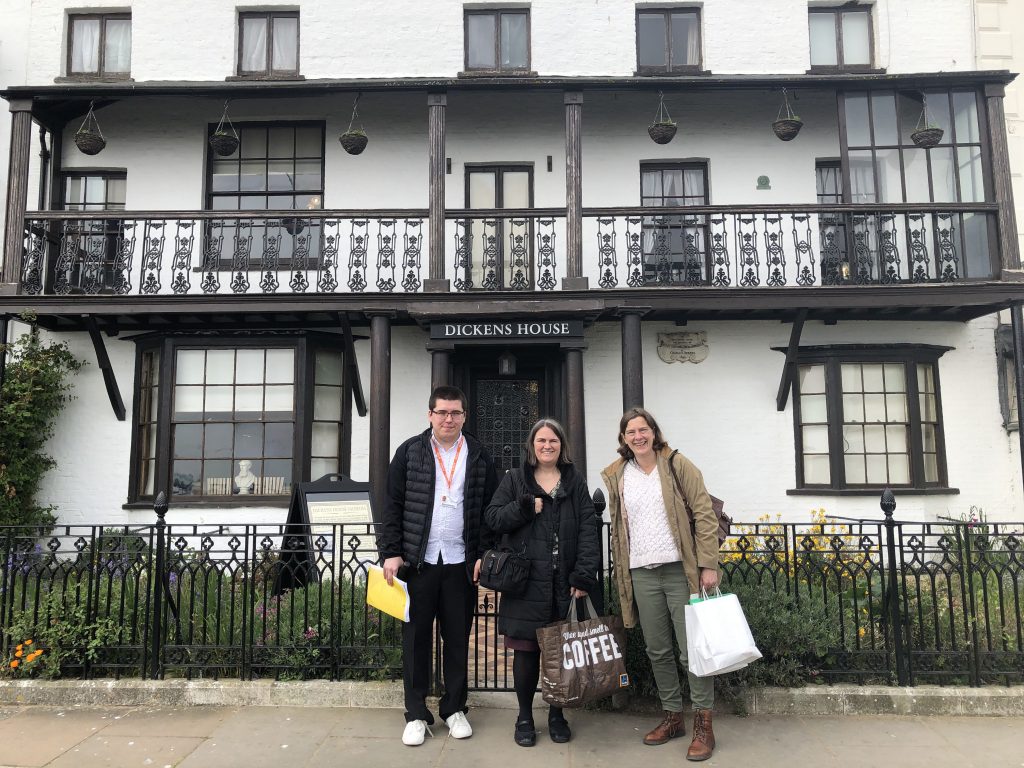
The skills that I learned which will be useful for the future, were how to create a visual essay of information to make it easier to understand, how to create a blog post, and I was able to develop my skills and confidence in using Excel and reference management tools such as Refworks. You can read my blog post about Black theology material in the library here.
I would definitely recommend a placement like this to other students. The placement was helpful in learning a wide range of skills from how to create a reading list to how library archives work. This sort of placement is useful for any student wishing to gain experience in a professional and educational workplace.
This placement helped me understand that a professional educational environment is the type of workplace that suits me best and opened my eyes to the fact that librarianship is definitely an option I would consider in the future.
The Library would like to thank Amy, Lily-Belle, Ester and Michael for the work that they did and wish them well for the future.
 Library
Library Michelle Crowther
Michelle Crowther 1688
1688